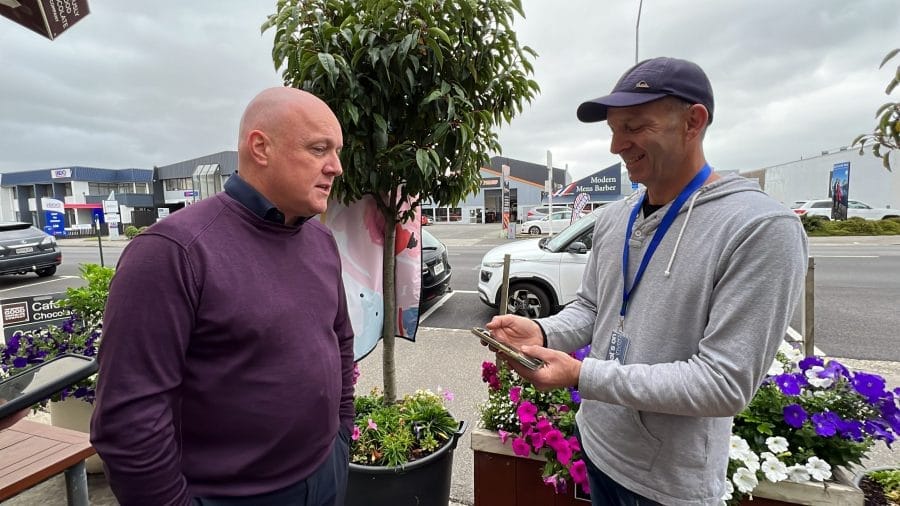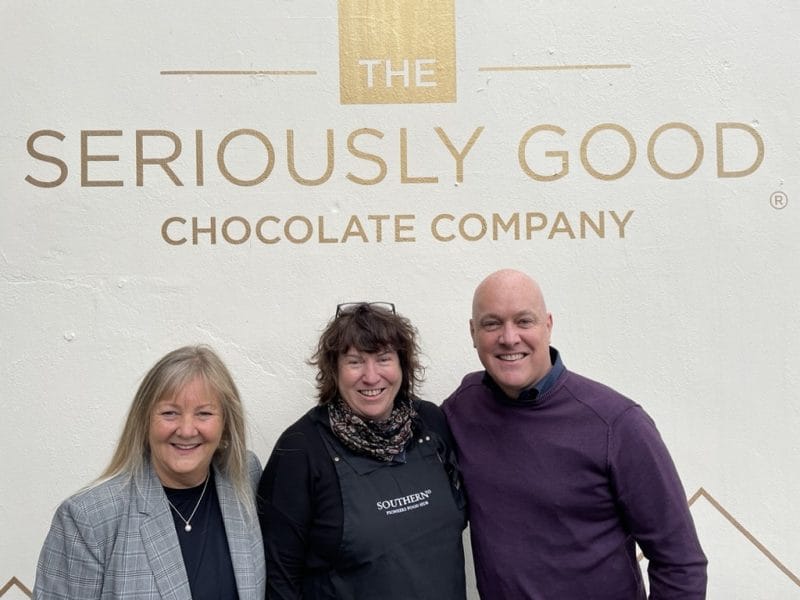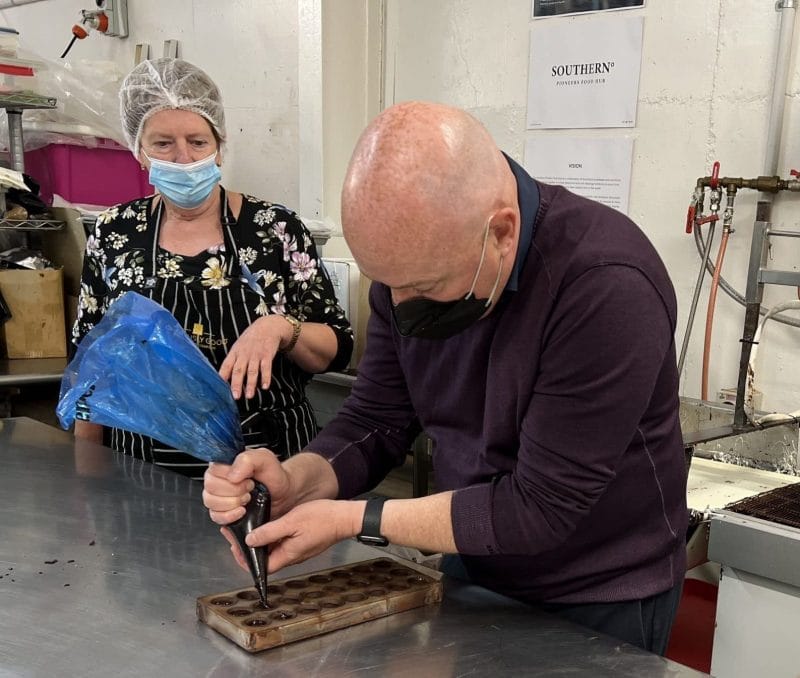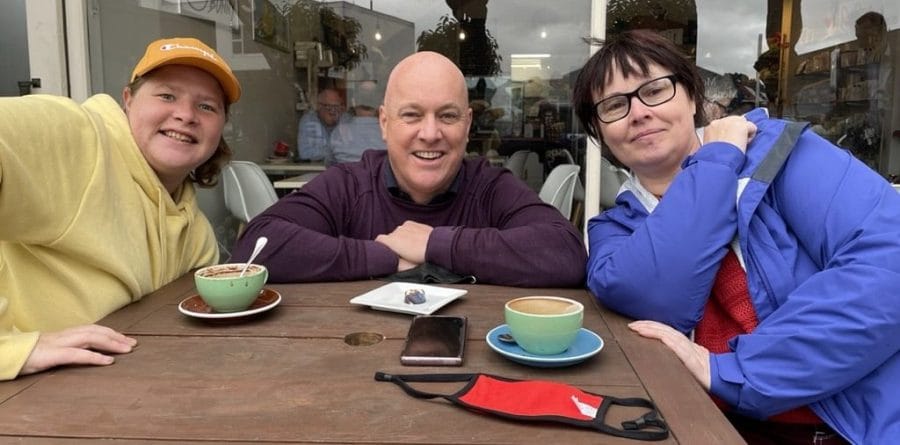
When Christopher Luxon came to town on Saturday, whatsoninvers.nz founder Mike Sanford asked him some questions about the worker crisis, tax, inflation and mandates.

After a tour of the Invercargill Central city centre redevelopment, and the Seriously Good Chocolate Factory where he tried his hand at making the delicacies, Mike asked Chris what he thought could be done about the worker crisis – particularly as it related to Invercargill.
“One of the things we’ve got to be able to do is bring in essential and critical workers across New Zealand. As you know there has been quite a good influx of migrants into Invercargill over the years…. but we need to have a good immigration system and we don’t at the moment.”

Mike asked him what he thought of the redevelopment and if he agreed that Invercargill will soon have the sexiest inner city in New Zealand, to which he laughed.
“Oh look I love Invercargill, I have been here many times, and obviously when I was with Air New Zealand I worked really closely with local government, and with Penny at the SIT…. because we were building demand here in Southland to be able to bring our jet services here.”
For his father’s 70th birthday a few years back he and his brothers came down and spent a lot of time exploring the area as well, including Stewart Island.
“I really enjoy the city, the community is really strong and the people are very invested,” he said.
And regarding the vaccine mandates?
He said the bigger point here is that Omicron is quite a different risk than two years ago, and as a result there is a need to change the response and the measures in place.
Over time vaccine passes and mandates become less effective because Omicron is infectious whether you are vaccinated or not, “and the fact that the Government is pulling those down is a good thing.”

What happens if Omicron doesn’t go away and what is the National Party’s stance on this?
“You have to put measures in place and make them risk adjusted. The problem with the Government is they had a 2020 mindset in 2022 and the risk was very different two years on from where we were.”

